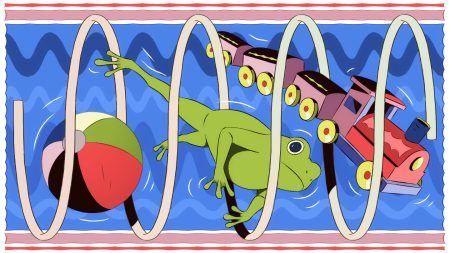The Unsung Heroes of Vision: Unveiling the Remarkable Water-Wicking Power of Eyelashes
Eyelashes, those delicate fringes adorning our eyelids, are more than mere aesthetic enhancements. They serve as vital guardians of our vision, diligently shielding our eyes from dust, debris, and, as recent research reveals, even the disruptive forces of water. While their role as dust deflectors has long been recognized, their remarkable ability to whisk away water droplets, preserving clear vision amidst rain, sweat, or tears, has remained largely unappreciated. This newly discovered superpower, published in Science Advances, unveils the intricate mechanisms by which eyelashes achieve this feat, highlighting their sophisticated design and emphasizing the potential impact of cosmetic alterations on their functionality.
The study, conducted by researchers at the Technical Institute of Physics and Chemistry of the Chinese Academy of Sciences, delves into the intricate interplay of structural features and physical properties that underpin the water-wicking prowess of eyelashes. Their investigation reveals a multifaceted approach employed by these tiny hairs to repel water, ensuring uninterrupted vision even in challenging conditions. One key aspect of this defense lies in the unique structure of the eyelash cuticle, the outermost layer of the hair shaft. This surface acts as a microscopic ratchet, facilitating the unidirectional flow of water from the root to the tip of the eyelash. This ingenious mechanism, akin to shingles on a roof, allows water to easily travel outwards but resists its movement inwards, effectively channeling droplets away from the sensitive eye surface.
Further enhancing their water-repelling capabilities is the hydrophobic nature of eyelashes. This inherent property, revealed through meticulous experimentation, causes water to bead up on the hair surface rather than spreading out and adhering. This beading action, coupled with the micro-ratchet mechanism, promotes the rapid shedding of water droplets, preventing them from accumulating and obstructing vision. The researchers demonstrated this hydrophobic effect by immersing loose eyelashes in water and observing the force required to withdraw them. The force was significantly greater when pulling against the direction of the cuticle scales, confirming the ratchet-like action and the resistance to inward water flow.
Beyond the cuticle and hydrophobic properties, the very shape of an eyelash plays a crucial role in its water-wicking ability. Eyelashes naturally approximate a brachistochrone curve, a shape known to minimize the travel time of an object under the influence of gravity. This curved architecture facilitates the swift and efficient removal of water droplets, further optimizing the eyelash’s protective function. To verify the importance of this shape, researchers compared nylon fibers mimicking different eyelash curvatures, including straight, brachistochrone, and alternative curves. The experiments confirmed that droplets slid off the brachistochrone-shaped fibers the fastest, highlighting the evolutionary advantage of this specific curvature.
The implications of this research extend beyond a newfound appreciation for the complexity of eyelashes. It underscores the potential impact of cosmetic practices on their functionality. Mascara, for instance, can alter the hydrophobic properties of eyelashes, potentially attracting water rather than repelling it. Similarly, curling eyelashes can disrupt their natural brachistochrone curve, compromising their ability to efficiently shed water. These findings emphasize the need for careful consideration of the impact of cosmetic alterations on the natural protective mechanisms of eyelashes.
This research not only sheds light on the previously unrecognized water-wicking function of eyelashes but also provides insights into the intricate interplay of structural features and physical properties that contribute to their remarkable efficiency. The cuticle’s micro-ratchet mechanism, the hydrophobic nature of the hair surface, and the brachistochrone curvature all work in concert to ensure optimal water shedding, preserving clear vision in various conditions. Understanding these mechanisms can inform the development of bio-inspired designs for water-repelling materials and surfaces, drawing inspiration from nature’s ingenious solutions.
The study’s findings also highlight the importance of appreciating the often-overlooked functionalities of seemingly mundane bodily features. Eyelashes, often considered primarily for their aesthetic value, play a vital role in protecting our vision, showcasing the elegant efficiency of natural selection. This research serves as a reminder of the intricate and interconnected nature of biological systems, where even the smallest components can perform crucial functions, contributing to the overall well-being of the organism. The delicate dance of water droplets on the curved surfaces of our eyelashes reveals a hidden world of biological ingenuity, reminding us of the remarkable complexity and efficiency of the natural world.















